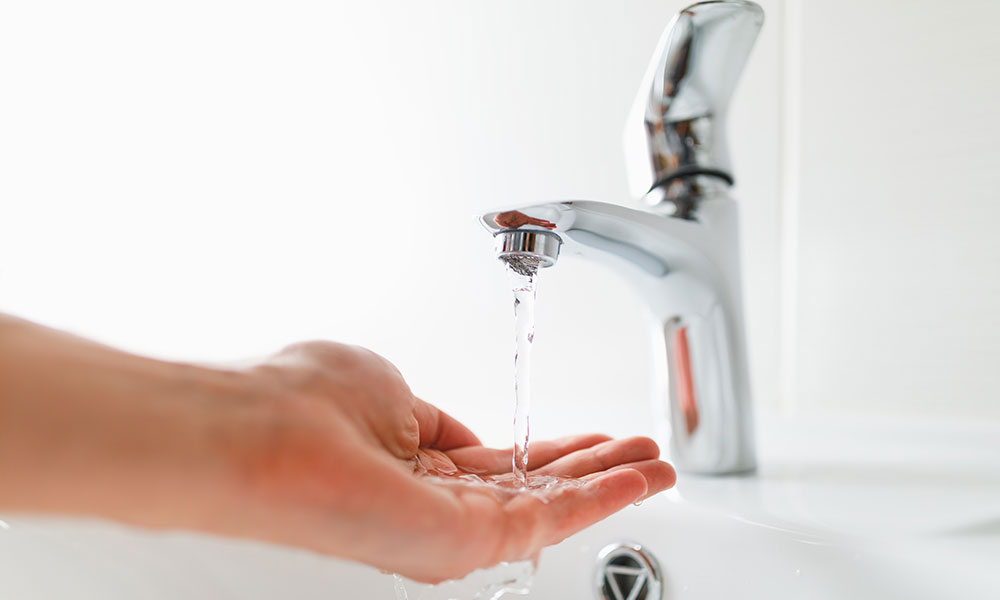This great article down the page relating to 9 Reasons for Low Water Pressure in Your House is seriously remarkable. Check it out for your own benefit and figure out what you think of it.

Low water stress in your home can be an aggravating problem, influencing whatever from bathing to washing dishes. If you're experiencing weak water circulation, there are several feasible causes and options to explore. In this guide, we'll talk about usual reasons for low tide pressure and useful actions to address the issue efficiently.
Introduction to Low Tide Stress
Low water pressure takes place when the flow of water from your taps, showers, and various other fixtures is weak than common. This can make everyday jobs a lot more challenging and less effective. Recognizing the causes of low tide stress is essential to finding the right remedy.
Typical Causes of Low Tide Stress
Faulty Stress Regulators
Stress regulatory authorities are in charge of preserving consistent water stress in your house. If they malfunction, it can result in low tide pressure or uneven flow throughout your house.
Metropolitan Supply Of Water Issues
Occasionally, the problem exists outside your home. Community water system issues, such as main line leaks or upkeep job, can briefly lower water stress in your location.
Pipeline Obstructions
Gradually, pipelines can come to be blocked with natural resource, debris, or particles, limiting the circulation of water. This is an usual concern in older homes with galvanized steel pipes.
Deterioration
Deterioration within pipelines can bring about leaks and reduced water stress. Rust buildup can constrict water flow, particularly in aging plumbing systems.
Exactly How to Identify Low Tide Pressure
Evaluating Pipelines
Evaluate noticeable pipes for signs of leaks, rust, or blockages. Focus on any type of uncommon sounds, such as knocking or rattling pipes, which can indicate concerns within the plumbing system.
Consulting with a Plumber
If you're incapable to determine the source of low tide pressure, consider working with an expert plumber to conduct an extensive inspection. They can recognize underlying issues and advise proper solutions.
Inspecting Faucets and Fixtures
Beginning by evaluating the water stress at different taps and components throughout your home. If the issue is separated to details areas, it might show localized issues.
Do It Yourself Solutions to Deal With Low Water Pressure
Flushing Hot Water Heater
Debris build-up in the water heater can restrict flow and minimize performance. Purging the storage tank periodically aids eliminate sediment and maintain optimum efficiency.
Inspecting Stress Regulator
Make certain that the stress regulator is operating properly. Changing or changing the regulatory authority can help recover correct water pressure throughout your home.
Cleansing Aerators and Showerheads
Natural resources can build up in aerators and showerheads, reducing water flow. Get rid of and clean up these parts frequently to improve water stress.
Clearing Clogs in Pipeline
For minor blockages, try utilizing a plumbing serpent or chemical drainpipe cleaner to clear obstructions in pipelines. Beware when making use of chemicals and follow safety and security guidelines.
When to Call a Professional Plumber
If do it yourself efforts fall short to solve the problem or if you believe substantial plumbing problems, it's finest to seek help from a qualified plumber. They have the expertise and devices to resolve intricate concerns safely and efficiently.
Safety Nets to Preserve Water Pressure
Setting Up a Pressure Booster
Consider mounting a pressure booster pump to improve water pressure in areas with continually reduced flow. This can be specifically advantageous for multi-story homes or buildings with high-demand components.
Surveillance Water Use
Be mindful of water use habits and prevent overtaxing the plumbing system. Basic adjustments, such as incredible showers and washing loads, can assist maintain adequate water stress.
Normal Maintenance
Arrange routine upkeep for your plumbing system to prevent problems such as corrosion, leaks, and obstructions. Attending to small issues early can assist avoid more significant fixings in the future.
Verdict
Taking care of low tide pressure can be discouraging, however recognizing the underlying causes and executing suitable options can recover optimum circulation throughout your home. Whether it's cleansing aerators, evaluating pipelines, or consulting with a plumber, taking proactive steps can ensure a steady supply of water for your daily demands.
FOUR WAYS TO FIX LOW WATER PRESSURE NOW
Turning on a shower or faucet only to find the water comes out in a sad, slow drizzle is never a good feeling. How exactly are you supposed to wash a pan or take a quick shower when it takes 10 minutes just to rinse off a little soap? The good news is that when your water pressure is bad, there's always a cause: typically one that can be easily fixed. Here are some of the most common causes of low pressure and what you can do to fix the issue:
DEBRIS AND MINERAL DEPOSIT BUILDUPS
If you notice low water pressure from just one or two of the fixtures in your house, the problem likely has to do with debris buildup. Water is full of minerals and other debris, all of which can accumulate in your pipes and on your fixtures. This can cause a blockage that affects how much water flows through. To fix this, try filling a small plastic bag with white vinegar, and use a rubber band to hang it around your showerhead or faucet. Let the head of the fixture soak for a few hours, and the vinegar should loosen the deposits.
WATER LEAKS
Leaks are another common cause of low water pressure. If water is flowing out of your plumbing through a hole or crack before it can reach your fixture, the pressure coming out of the faucet or showerhead will be lower. A plumbing professional is your best bet for finding and repairing a leak in your water supply pipes.
Leaks are another common cause of low water pressure. If water is flowing out of your plumbing through a hole or crack before it can reach your fixture, the pressure coming out of the faucet or showerhead will be lower. A plumbing professional is your best bet for finding and repairing a leak in your water supply pipes.
A VALVE ISSUE
If you have low water pressure throughout your home, check your main shut-off valve to make sure it's completely open. You may also want to see if there's a pressure-reducing valve installed. If there is, have a plumber help you adjust the settings to get the pressure you're looking for.
OTHERS USING WATER
Believe it or not, your low water pressure could be caused by your neighbors. If you notice low pressure at certain times of day, it may be because you and the people living next to you have similar schedules - when everyone is showering at the same time, the pressure will be lower in every home. Low pressure throughout the neighborhood may also be caused by an issue with your municipal water supply. If that's the case, call the supplier to see if they're working on the issue.
https://www.rotorooter.com/blog/water-leaking/low-water-pressure-fixes/

We are very drawn to 10 Reasons for Low Water Pressure in Your House and I hope you liked the new blog entry. Sharing is caring. You just don't know, you will be doing someone a favor. Many thanks for being here. Come back soon.
Click Here